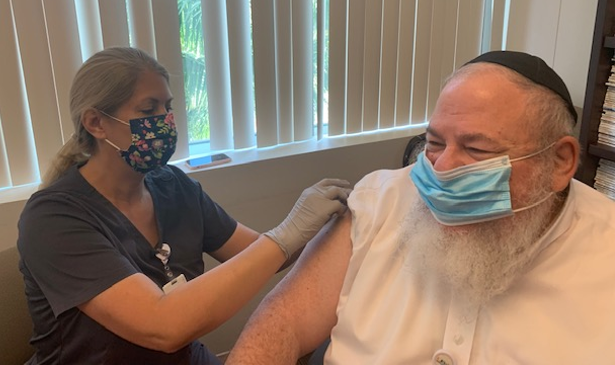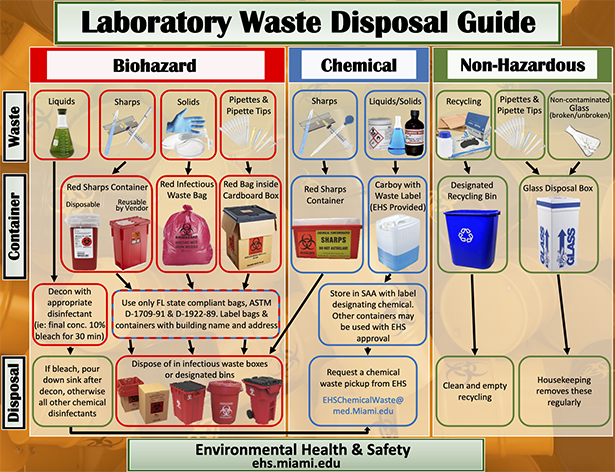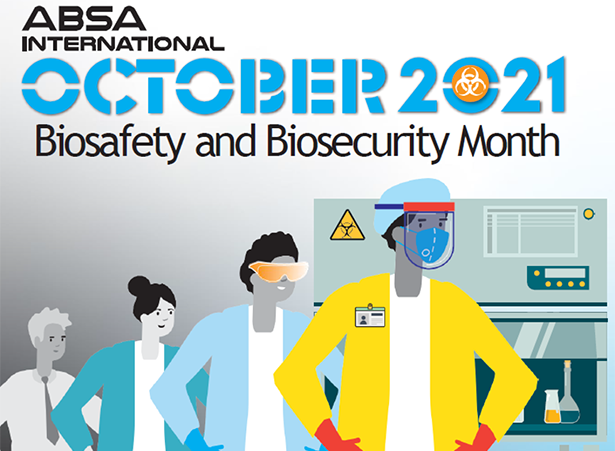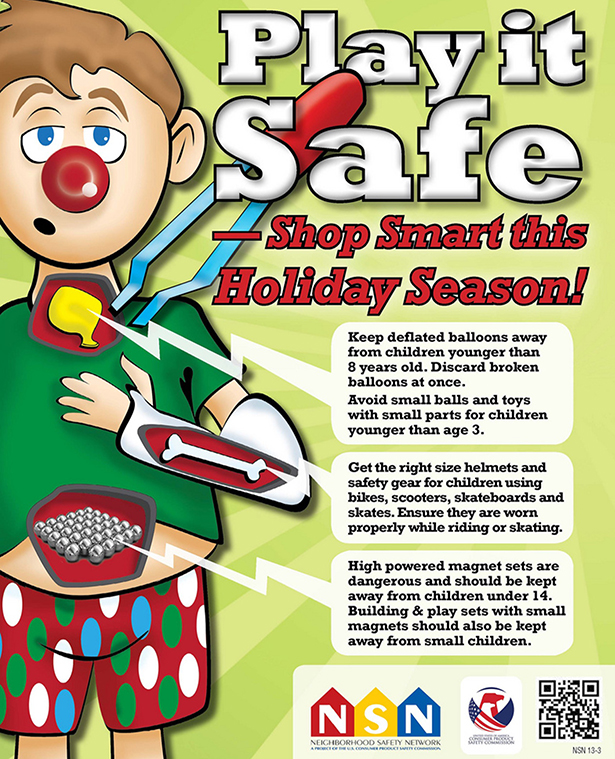Environmental Health & Safety from the Director's Desk
|
|
|
|
I am happy to be reaching out to you again as we look to closing out 2021 safely, and ringing in a brand-new year. EHS has had a dynamic year with continued improvements to our processes and website. Below, we share information about our revised Occupational Health Program form, our new laboratory waste guide, and important holiday safety tips.
You can find the latest EHS information at any time on our website (ehs.miami.edu), which has been updated to include a list of Florida Department of Health-compliant biomedical waste supplies for your convenience.
Also, don't forget, flu season is here. If you have not received your flu vaccination, now is the time! As always, we hope you find this information informative and useful, and we look forward to continuing to assist you in a safe and productive manner.
Warm regards,
Jennifer Laine, DrPH
Executive Director, EHS
|
|
|
|
While the faculty and staff flu vaccine compliance date for this year was November 17, flu vaccinations are currently still available.
All Employee Health (EH) Offices and Healthy 'Canes are open and available to provide flu vaccinations. At the U, there are three flu vaccination options to choose from, including the typical vaccine for those over six months of age, the high dose for those over 65, and Flublok for those allergic to egg proteins. If you receive your vaccination from an EH Office or Healthy 'Canes, your Workday compliance status will be updated for you!
You can go to locations outside of the U as well, if you'd like. If you do, remember to get a copy of your documentation to upload to Workday. Documentation needs to include your name, date of birth, vaccine manufacturer, and vaccine lot number.
As a reminder, employees are required to receive an annual flu vaccine per the COVID-19 Preventive Measures in the Workplace Policy. If you are applying for an exemption—religious or medical—it can be completed through Workday.
For more information, visit the Seasonal Flu Vaccine page on our EHS website.
|
|
|

|
|
As the holidays approach, we want to remind the University community of some decorating dos and don'ts:
- Do use Underwriters' Laboratories (UL) Listed decorative lights, decorations, and ornaments.
- Do use artificial holiday trees that are fire-resistant and place indoor trees away from traffic. Remember not to block doorways or fire safety equipment!
- Do unplug all holiday lights when you leave the office for the day.
- Do remove all decorations, displays, lights, and/or ornaments after the holidays.
- Do not use decorative sprays or hang decorative materials (lights, ornaments, etc.) on any fire protection equipment (fire extinguishers, sprinkler heads, smoke detectors, fire alarm pull boxes, etc.), or on exit signs, exit doors, or emergency lights.
- Do not place decorations, displays, lights, and/or ornaments in any manner that could present a fall or trip hazard or impede egress.
- Do not bring or burn candles, incense sticks, and/or other related devices/accessories.
For more information, please contact Christine Daley.
|
|
|

|
|
Laboratories will see a new addition in the near future to help with questions on waste disposal. Our EHS team has put together a brand new Laboratory Waste Disposal Guide. This is a quick reference and reminder for where to dispose of various wastes that are typically produced in laboratories. We plan to introduce supporting information and more detail for each of these pathways in our next newsletter.
Remember, if you need old chemicals or chemical waste picked up, visit the Environmental Protection and Hazardous Materials webpage for information. The Chemical Waste Disposal Form (Excel sheet) is located on this page, including instructions on how to fill out and submit the form.
If you have any questions regarding wastes that you would like to have addressed, please email Vaughan Munro.
|
|
|

|
Highlighting Biosafety Month
Each year, the American Biological Safety Association (ABSA) presents October as Biosafety and Biosecurity Month. For labs, the month is traditionally recognized as a period where we focus on and reinforce our attention to biosafety standards. This year's theme was Innovation. The Biosafety Office highlighted this theme by reviewing innovative strides made by EHS this year in the following areas:
- The University adopted the BioRAFT biological registration process as a modern method of documenting and tracking the biological research conducted by institutional researchers. For further guidance, please review this website.
- To ensure the University was both meeting its regulatory obligations and providing a less confusing enrollment process, the Occupational Health Program enrollment questionnaire was updated to more holistically document personnel exposure risks while reducing the total number of forms required of our researchers. For more information, please review our website.
- EHS developed new guidance and signage to outline how waste streams are expected to be maintained by labs and specifically outline what waste containers are acceptable to meet the University's regulatory obligations. Review our website's Hazardous Waste section for a preview or to review and download the new poster.
The Biosafety Office remains committed to building a strong culture of safety and developing the tools necessary to ensure our researchers are able to easily and effectively work safely in the lab. Learn more at ehs.miami.edu/biosafety.
|
|
|

|
|
The Radiation Control Center (RCC) also had quite a dynamic year. If you are not aware, our Director of RCC and Executive Radiation Safety Officer (RSO), Ed Pombier, retired earlier this year after a 37-year tenure with the University. We wish him a very happy and much deserved retirement. Since then, Ramses Herrera has been promoted to the position of Director and continues to serve as the RSO. The RCC has shifted to a new reporting structure, but continues to fully support our research laboratories.
As a friendly reminder, if you are a current user, or if you have a new need to use radioactive materials in your research, please contact Dr. Diana Hernandez, Ph.D., Assistant Radiation Safety Officer, of the Radiation Control Center.
Ramses Herrera and Diana Hernandez can both be reached by email or at the RCC by calling 305-243-6360.
|
|
|
Toy Safety
Many of us will recall fond memories of the toys we got as children, never imagining that they could contribute to accidents or cause harm; however, in 2019*, nearly a quarter of a million children suffered injuries involving toys and were treated in U.S. hospital emergency departments. Sadly, 14 of these incidents were fatal. Of the 224,200 estimated toy-related, emergency department-treated injuries, an estimated 73% happened to children 14 years of age or younger; 70% occurred to children 12 years of age or younger; and 35% happened to children 4 years of age or younger**.
The Consumer Product Safety Commission (CPSC) is doing an amazing job at keeping unsafe toys away from our shores. Many organizations that promote safe toys have also joined in the fight. You can find out more about what exactly CPSC does via their YouTube channel.
Listed below are some of the things that we can do to protect little ones, not only during the holiday season, but also throughout the year:
- Read instructions, particularly the warnings. They are there for a reason. Don't ignore them!
- Make sure the toys you give are age-appropriate for the child and separate toys by age. Toys intended for older children may pose a risk to the younger ones.
- Some toys can contain lead, toxic substances, or hazardous materials. Ascertain, whenever possible, that the toys meet the ASTM D-4236 criteria.
- According to CPSC statistics (2019), the toy that resulted in the most injuries and death were non-motorized scooters. Some of these accidents involved being struck by a vehicle or object. Proper supervision is important, as well as ensuring the user knows how to use the toy safely. Consider supporting equipment such as helmets and protective pads to help protect your little one.
- Avoid any round or spherical object that has a diameter of 1.75 inches or less, particularly with children under the age of three and small parts that can easily separate or be detached from the toy. As we all know, toddlers like to put everything in their mouths. These small sizes can be choking hazards.
- Sharp or protruding parts can cause eye or other injuries. Consider alternate toys that do not present this type of hazard.
- Store toys safely when playtime is over.
Learn more about toy safety.
* CPSC Toy-Related Deaths and Injuries 2019
** All toys intended for use by children 12 years of age and under must be third party tested and be certified in a Children's Product Certificate as compliant with the federal toy safety standard enacted by Congress, and to other applicable requirements as well.
|
|
|

|
|